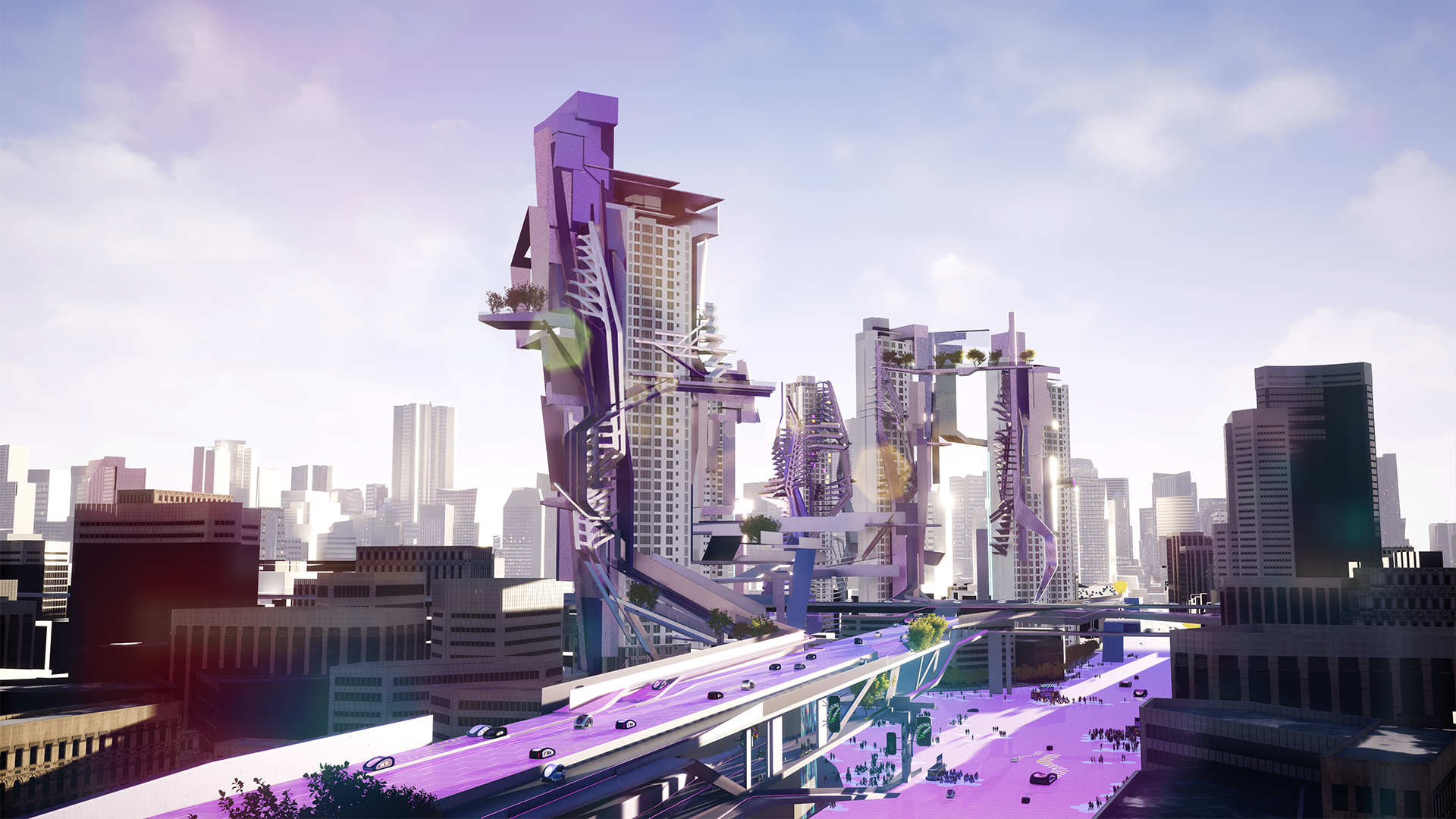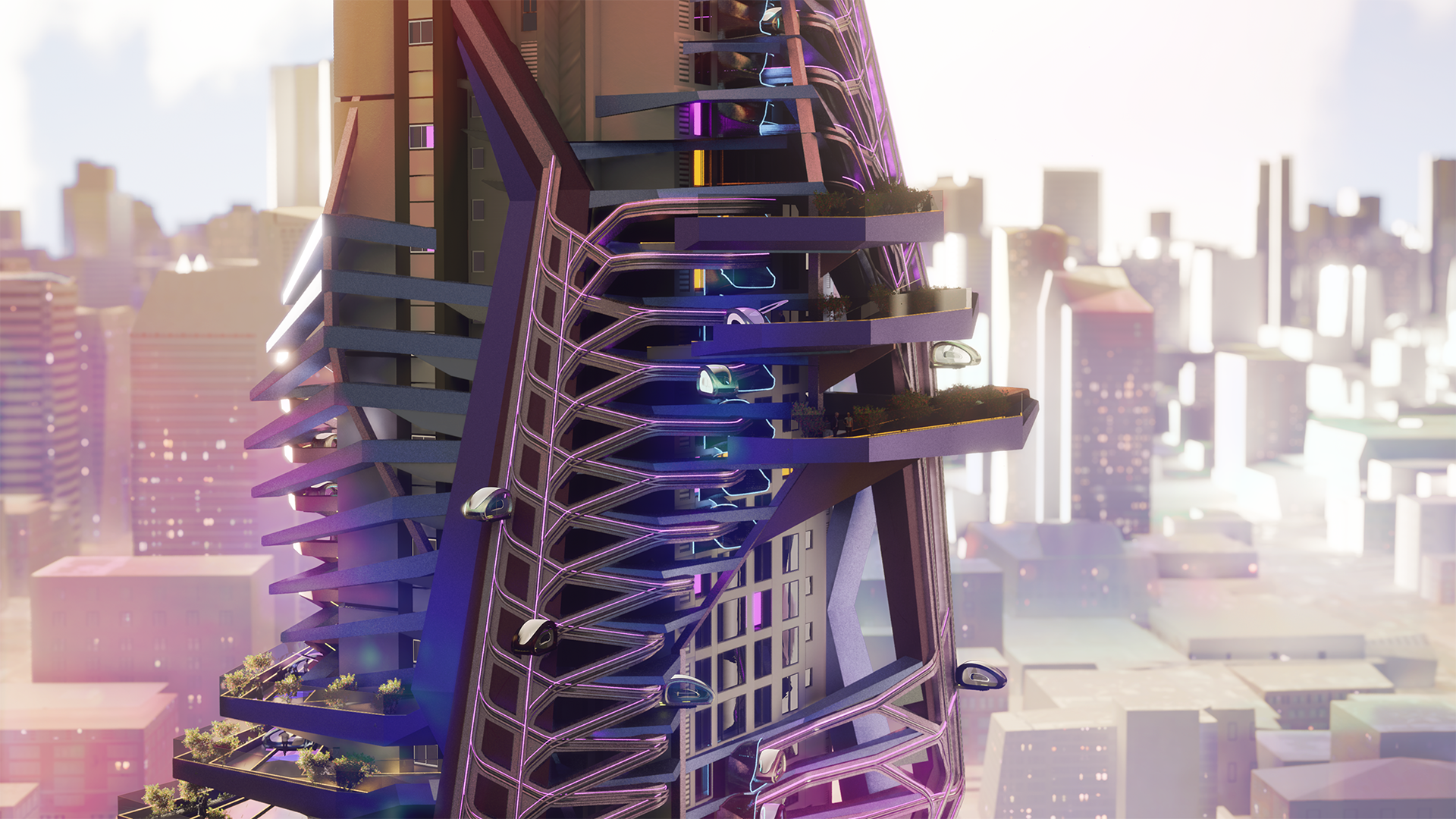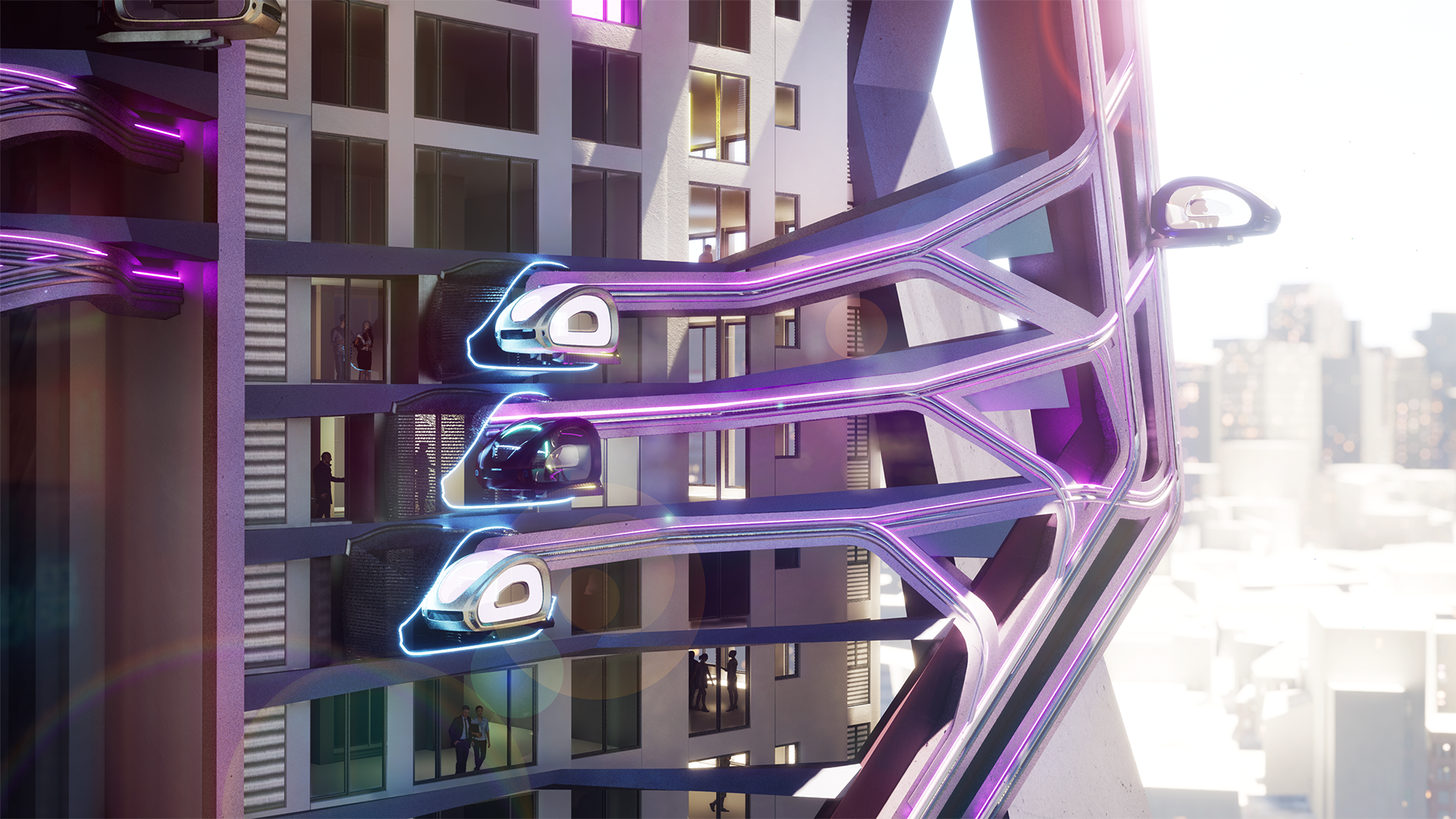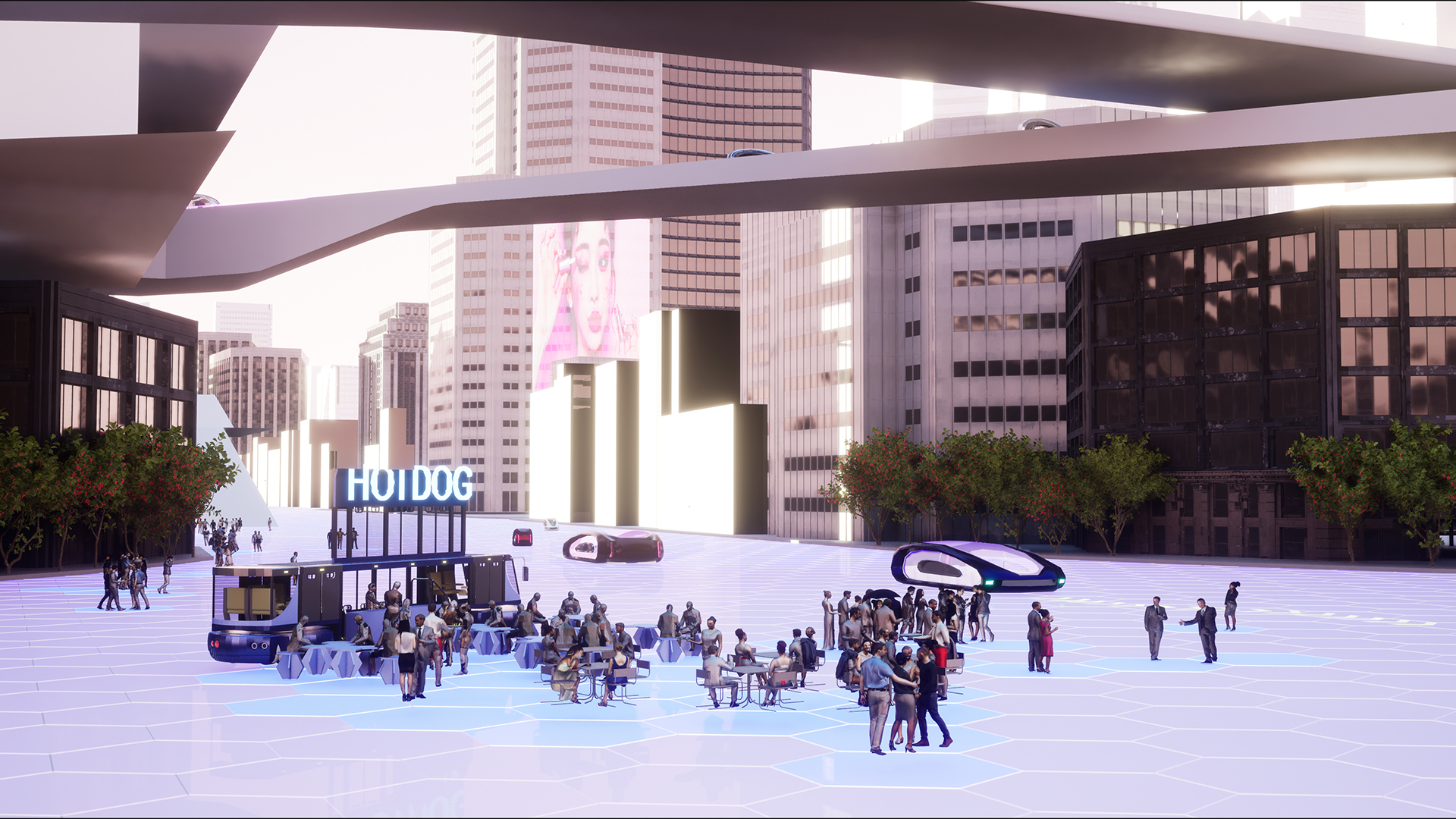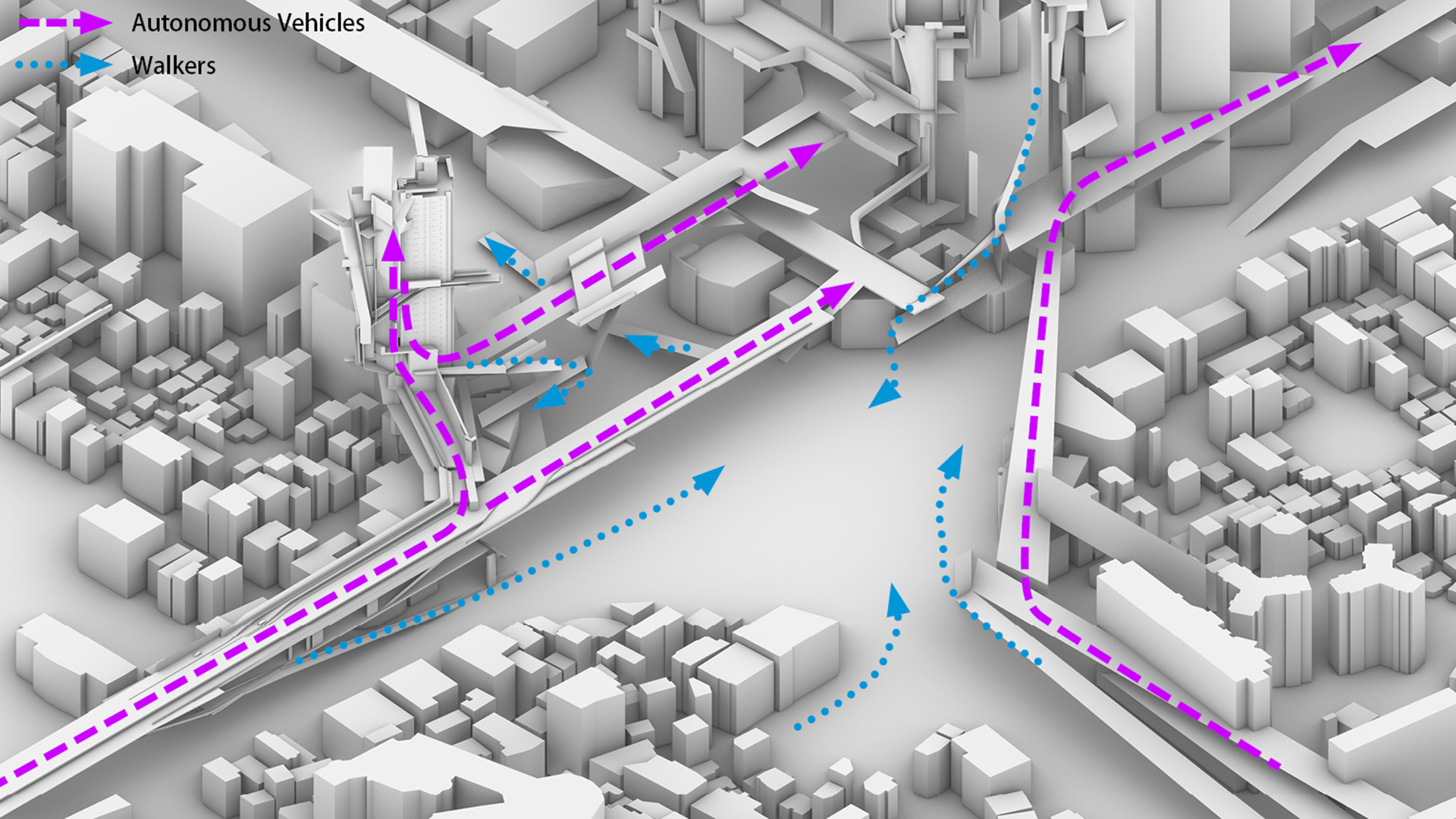MUTUALISTIC CITY
Competition Entry
2023.08.
Design Team:
Soomeen Hahm, Hanjun Kim, Rachel Pump, Runkai Jin
Introduction:
The rapid pace of urbanisation and population growth has brought new challenges to metropolitan cities in Korea, particularly in terms of urbanism. The lack of public squares in the city has resulted in an environment that is non-human-scale and poorly suited to the needs of civilians. This led to numerous issues, including congestion and the safety of pedestrians. To address this challenge, we propose a new urban system that leverages the potential of large crossroads and high-rise buildings in the city.
The Issue:
The absence of public spaces has led to a cityscape that does not meet the needs of residents and visitors. Despite the rapid development of the city, which has seen an increase in large crossroads, the number of public parks and squares has grown at a much slower pace. This has led to a situation where streets are sometimes blocked off for special events, causing traffic congestion and significant inconvenience to local residents. This circumstance makes the city not conducive to leisure activities and fails to provide a safe and efficient environment for all road users.
Proposal:
To address this challenge, our proposal takes advantage of autonomous vehicles and the city’s existing large crossroads and high-rise buildings. Our vision is to create free-form streets that seamlessly integrate into and above buildings, creating augmented architecture that forms a symbiotic relationship between buildings, open spaces, and the public.
With the advent of autonomous vehicles, streets can now be designed without being limited by gravity and traditional road infrastructure. Autonomous vehicles will be able to navigate the building surfaces, park directly in front of homes in skyscrapers. The result of this new urban system is the transformation of crossroads into dynamic and interactive public squares, enhancing the human experience in the city. By implementing real-time sensing and monitoring systems, all aspects of movement in the district can be monitored and predicted, allowing autonomous vehicles to self-organise and optimise their high-speed roads. This will provide a safer and more efficient environment for all road users and reduce concerns about dangerous traffic conditions.
In addition, the transformed crossroads will become opportunities for more diverse public activities and events, offering a unique chance to re-imagine urban spaces and promote a more livable and vibrant city for residents and visitors alike. The integration of autonomous vehicles into the urban landscape can help address the shortage of public spaces in Korea’s metropolitan cities, and provide a glimpse into the future of urban design.
Conclusion:
The incorporation of the latest technologies and innovations in the era of autonomous vehicles will also provide a platform for future innovations and technologies to be developed and integrated into the urban system. The result will be a city that is well-suited to the needs of residents and visitors, providing an environment that is both functional and enjoyable.

